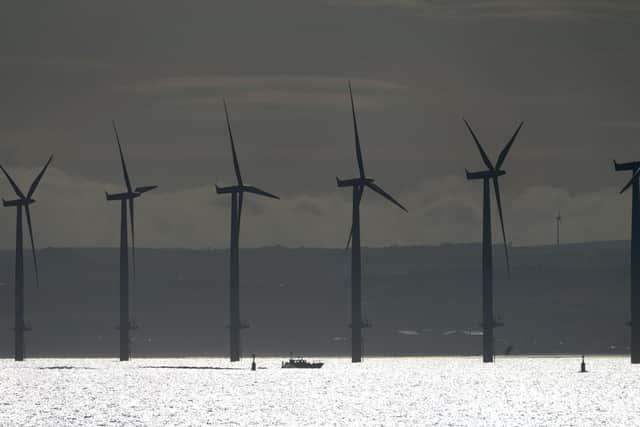This is what will be done to make Lancashire carbon neutral by 2050
and live on Freeview channel 276
The county will also create significant amounts of so-called “green hydrogen” by the middle of the next decade, as the wider North West region moves away from a reliance on natural gas.
The details emerged at a meeting of Lancashire County Council’s external scrutiny committee where members heard that the creation of new onshore and near-shore wind farms could see the county become a generator of renewable energy for other parts of the UK.
Advertisement
Hide AdAdvertisement
Hide AdOverall, however, Lancashire will be a net importer of both electricity - which will provide the bulk of the county’s power in 30 years’ time - and hydrogen.


The latter will be “in the mix” of meeting energy demands, although its exact contribution is not yet known. Hydrogen will play a role in heating homes and powering industry from the 2030s.
Just under two thirds of hydrogen generation for the North West as a whole will come from renewable sources such as wind power.
“The electricity grid can’t take all of the [energy] that wind farms can produce - so you can put a hydrolysis plant next to [a] windfarm, take the excess renewables and make hydrogen with it,” explained Electricity North West engineering and technical director Steve Cox.
Advertisement
Hide AdAdvertisement
Hide AdThe regional electricity network operator - together with its gas counterpart, Cadent - told the committee of a £5bn investment plan over the next seven years, laying the foundations for how Lancashire can decarbonise within three decades.
In order to hit the 2050 target, around a quarter of buildings in the county will need to convert to hydrogen-fuelled boilers, a fifth to heat pumps and the remainder to hybrid systems.
Around 40 percent of Lancashire’s hydrogen requirement will come from so-called “blue hydrogen”, whereby the substance is generated from the reforming of natural gas - but that process leads to the creation of carbon dioxide, which would then have to be captured and stored. There are plans to create storage capacity for that purpose beneath Liverpool Bay.
Last year, it emerged that proposals were also being developed to harness electricity generated from the nuclear power stations at Heysham to create low-carbon hydrogen via the use of electrolysers.
Advertisement
Hide AdAdvertisement
Hide AdThe two Heysham reactors are set to be decommissioned in 2024 and 2030 and, although the committee heard that their lifetimes are likely to be extended, entirely new reactors would have to be created if nuclear is to play a role by 2050.
Meanwhile, committee member and Fleetwood West county councillor Stephen Clarke - a long-time proponent of harnessing the power-generating potential of the River Wyre - said a shift towards tidal would be a “great advantage” to coastal Lancashire.
“With the River Wyre having a rise and fall of 30 foot [in tide], I’m sure that twice a day, guaranteed, we could start using tidal power a lot more for energy,” he said.
Mr. Cox said that any role for tidal generation would depend entirely on the “price point” per unit of electricity created by the method compared to wind turbines or the next generation of solar technology.
Advertisement
Hide AdAdvertisement
Hide AdHelen Boyle, regional development manager for Cadent Gas, said that there was “a lot of work to do” to prepare Lancashire for a carbon-neutral future - and much of it was needed in the next ten years because of the long-term nature of infrastructure investment planning.
Mr. Cox added that the publication of a “routemap” to that destination - which was presented at the meeting - was intended to allow businesses and individuals “to adopt technologies with the confidence that they will be able to recharge their vehicles and decarbonise their lives”.
Several Lancashire councils have set targets to become carbon-neutral in their own operations by 2030 - including Preston, South Ribble and Chorley.
Total energy demand in Lancashire is expected to fall from 34 to 22 terawatt hours by 2050, because of improvements in energy efficiency.
Comment Guidelines
National World encourages reader discussion on our stories. User feedback, insights and back-and-forth exchanges add a rich layer of context to reporting. Please review our Community Guidelines before commenting.